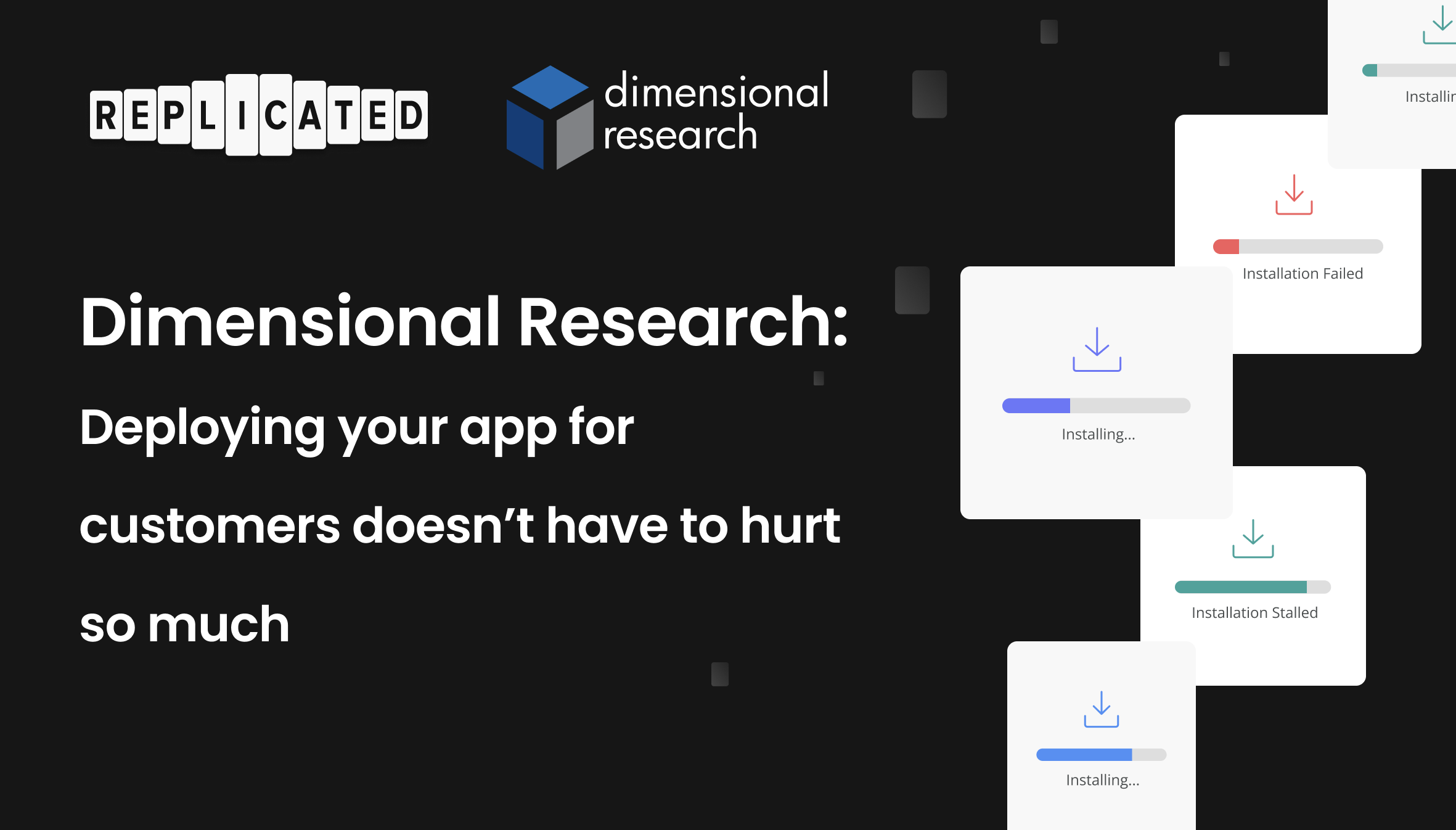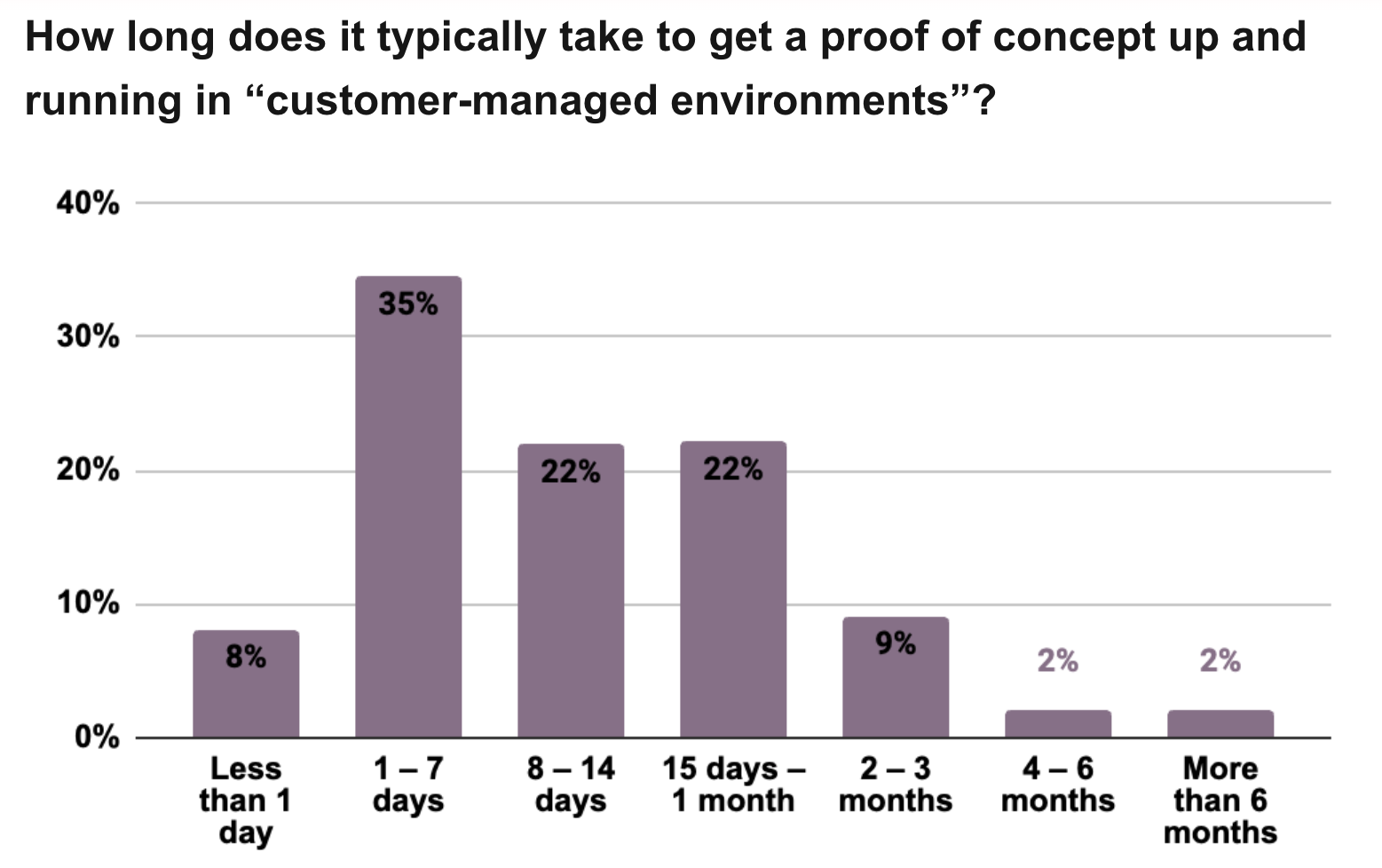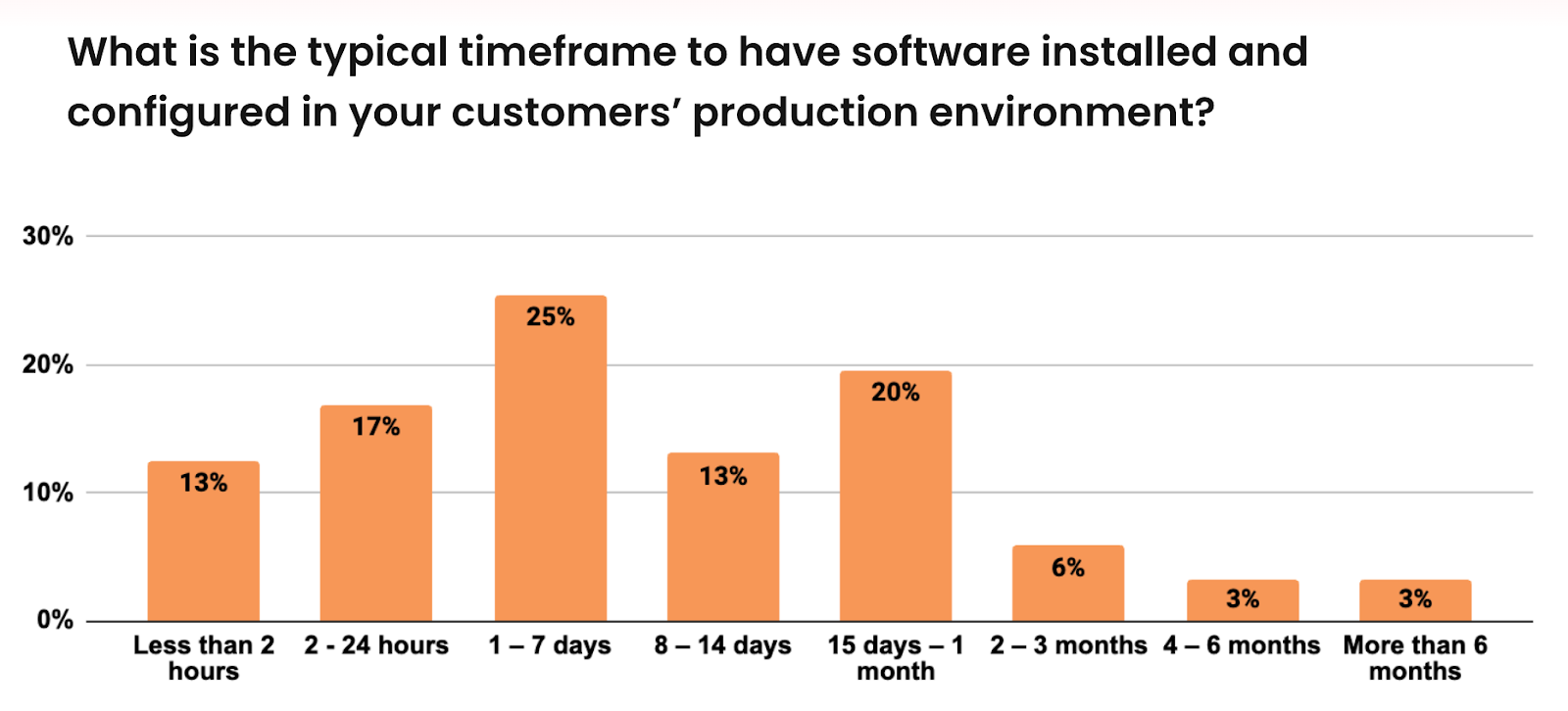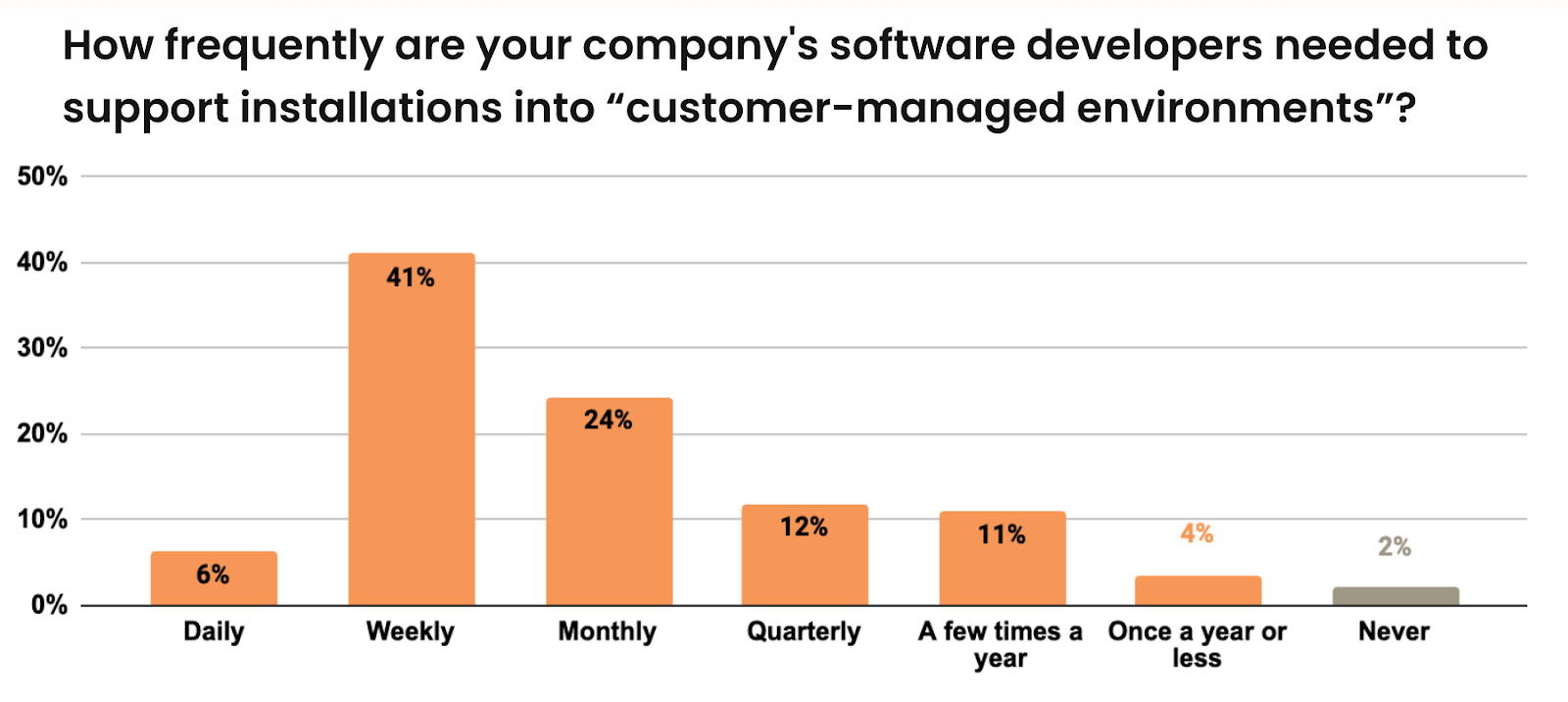
There’s nothing like a good first impression, but most ISVs offer nothing like a good first impression of their app when installing into customer-managed environments. This blog will explore the pain of non-SaaS software installation and updates, and suggest some strategies to improve the experience for both vendors and their customers.
Background
Each year, replicated commissions an independent research firm to study the market for commercial software deployed into any customer-managed environment. We define customer-managed environments to include public cloud infrastructure-as-a-service (IaaS), public cloud platform-as-a-service (PaaS), private cloud, hybrid cloud, virtual private cloud (VPC), and on-premises data center) – pretty much anything but a pure Software-as-a-Service (SaaS) offering.
Previously in this ongoing research-based blog series, we discussed the upside of selling applications into customer-managed environments (vs. a SaaS-only business model), some concerns and answers, and how to efficiently support customers.
View the full report here.
Proving it: getting your POCs up and running faster

Research findings: 62% of ISVs report providing POCs in customer-managed environments as part of their sales process. Only 8% of these POCs get off the ground within one day, while 35% take up to a week, and 57% take between a week and six months (or longer!)
While nearly a third (32%) of vendors have built a dedicated demonstration environment for prospective customers to evaluate their software, almost twice as many (62%) require a POC to be conducted in the customer’s environment as a real-world test. The problem is that most of these POCs installs can drag on indefinitely – even before they properly start – impacting sales cycles and eroding enthusiasm for the project as time goes on. A knock-on problem is that the longer your pre-sales technical staff (SEs, SAs, etc.) spend on each POC, the less time they can devote to other prospective new business opportunities. If you want to improve your sales cycle time and move more reliably towards closing deals, you should definitely check how replicated can help you install faster by complementing Helm, providing a custom installer, or even provisioning an ideal Kubernetes cluster for your app.
Production installs don’t fare much better than POCs

Research findings: While 35% of vendors say production installs get done in a day, 25% take up to a week, while 45% take between a week and six months (or, sadly, again longer!) For installs taking more than two weeks, common reasons include delays by the customer (80%), getting access to resources (76%), incompatibilities (57%), install complexity (49%), required customizations (41%), and deployment team availability (18%).
It’s encouraging to see that product installs go a bit faster the second time around (presumably much was learned in the POCs), they still tend to run much longer than anyone might like, impacting the time-to-value of the solution after the sale is closed. While little can be done to make customers move faster if it’s not their priority, many of the other challenges slowing production deployments can be addressed using the same platform installer approaches as with the POCs (listed above.) Spinning up a new cluster and programmatically installing software will avoid access issues and install complexity especially for teams less familiar with K8s, while compatibility testing should improve success rates. And as noted before the faster each project goes, the more availability your field technical teams will have to service other opportunities.
The impact goes beyond field teams, often hurting developer productivity

Research findings: While the number of new installations into customer-managed environments can vary widely based on the vendor’s business model and size, 37% of those surveyed say they do at least 4 per month. 47% of ISVs say their developers need to assist the field with customer installs at least once a week, with an additional 24% helping at least once a month.
These findings highlight that it’s not just field staff who spend their time troubleshooting issues found while installing their apps into customers’ environments. Indeed, core software developers frequently have to interrupt their day jobs to help out. The context switching from innovation to providing technical support pre- and post-sales may give them some insights on how to make the product more reliable, but it undoubtedly comes with a steep hidden cost to development schedules. And the pain isn’t limited to first-time installs, a majority of companies surveyed said that their product upgrades also require support to complete at least half the time. If you aren’t measuring your own business metrics in these areas, you may be surprised at how much room there is for improvement and how much wasted time you can claw back for all your teams.
If you're not sure how long your installs even take to complete, check out our blog on Instance Insights: Time to Install.
About This Study
Research goal: The primary research goal was to capture and document current trends for software installed in customer-managed environments (CME). The research sought to understand market demand, customer needs, support challenges, revenue growth, and future software development plans. POCs, installation challenges, upgrade habits, the impact on company personnel requirements to build and support CME solutions. investigated.
Methodology: Executives, business, and technology professionals at all seniority levels representing software companies of all sizes were invited to participate in a survey on their company’s customer-managed environment software development, delivery, and strategy. The survey was administered electronically, and participants were offered a token compensation for their participation.
Participants: A total of 695 qualified participants completed the survey. 505 participants were recruited by Dimensional Research while 190 were replicated customers. All participants had direct software responsibilities. Participants were from 5 continents representing a global view.
View the full report here.